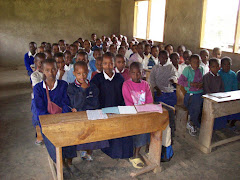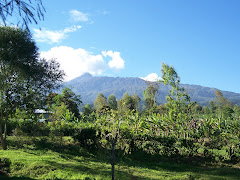It’s early November in Tanzania, Africa – high on Mt. Meru. The annual corn crops have been planted everywhere there is available land – in large and small farm fields; in fields both on level ground and on steep hills. Corn is an important staple food in this region.
By early November, there are fields with corn plants that have grown to a height of just a few feet, and fields with plants stretching up to 5 feet into the air. The corn is planted in hand tilled and hand planted rows separated by shallow troughs to aid in irrigation when it does rain.
There is green everywhere, unlike so many of the prior years when seasonal rains never really came at all and grass and crops alike were withered and brown from the ongoing drought.
But the green on Mt. Meru this year is deceiving. Hopes were high a few weeks ago when there were several days in a row with light rains, but the rain never amounted to anything significant enough to soak deep into the soil. Scoop up a handful of the dirt in these farm fields, and it is light as dust, carried on the breeze that only gives temporary relief from the heat of the African sun.
Look closely at the corn crops and there is no real corn to harvest. By late November, the abundant rains needed to nourish these crops had not materialized. There are no tassels at the tops of so many of the corn plants, and the corn stalks that do have tassels bear only immature and underdeveloped cobs of corn.
By the end of November and the tail end of this “rainy season,” and with a resolute acceptance that is heartbreaking to watch, the villagers head out with machetes in hand, and begin to cut the drought damaged corn and clear their fields. They have given up hope for this year’s corn harvest. There will be no fruits from their months of labors. The corn crop has failed yet again.
In a sad twist of fate, the corn stalks and drought damaged corn will become a supplemental food source for the local livestock. But even for cattle, the nutrient value of the corn stalks and drought damaged corn is minimal.
As sustenance farmers living high on the slopes Mt. Meru, the people simply cannot afford to give up and become the victims of another failed crop. With their unwavering faith and simple acceptance that “God will provide” they resolutely head again to their now cleared farm fields, hoes in hand, to plant the seeds for the crop of the next growing season… potatoes.
But they are not simply planting the seeds for potatoes… they are planting seeds of hope.
Wednesday, January 26, 2011
Subscribe to:
Post Comments (Atom)

+-+Copy.jpg)


.jpg)
.jpg)




No comments:
Post a Comment